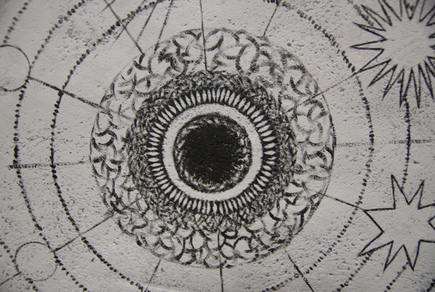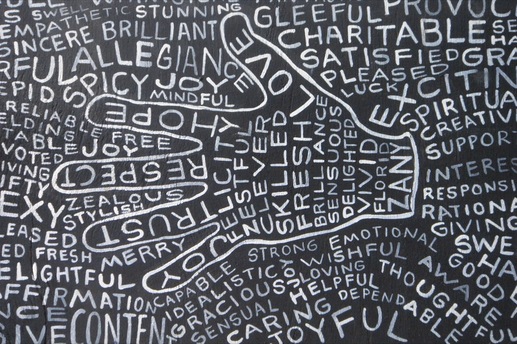
Pronouncing Speed Language is very easy!
Once you learn how to pronounce the letters you will be able to read ANY Speed Language word you encounter.
The letters are always pronounced the same way, so you don't have to learn any exceptions to the rule.
Speed language uses some special letters called digraphs. A digraph is when two letters are used to show one sound. Digraphs are used often in English so, you won't have a problem with them in Speed Language either.
Here are the letters that are used in Speed Language and, what sounds they make.
` is a consonant in Speed Language. Its a glottal stop and sounds like the stop in Uh-Oh
A - sounds like the A in father
Aw - sounds like the Aw in saw (This is a digraph)
B - sounds like the B in Brother or, Book
C - sounds like the C in Can or car. C never sounds like an S in Speed Language.
Ch - sounds like the Ch in Church
D - sounds like the D in Dome or Danger
Dh - sounds like the Th in This or, That
Dz - sounds like the ds in Sudsy
E - sounds like the E in Bet or, Get
Ei - sounds like the Ei in Reign
F - sounds like he F in Father
G - sounds like the G in Gun or, Go. G never sounds like a J in Speed Language
H - sounds like the H in Hello
I - sounds like the EE in Seen or, Green
Io - is another digraph. It is the sound of Yo in Yo-Yo
J - sounds like the J in Judge or, June
L - sounds like the L in Like or, Look
M- sounds like the M in Month or, Many
N sounds like the N in Noon or, Nun
O - sounds like the O in Go or So
P - sounds like the P in Pop or Power
R - sounds like the R in Real or Roar
S - sounds like the S in Sing or, Secret
Sh - sounds like the SH in ship
T - sounds like the T in Top or, Tunnel
Ts - sounds like the Tz in Fritz
U - sounds like the U in Bun or Sun
Ua - sounds like the Ua in Squat
Ue - sounds like the Ue in Glue or, Blue
V- sounds like the V in Violin or, Very
W - sounds like the W in Wool or, Would
Y - sounds like the Y in Yellow or Yam
Z - sounds like the Z in Zoo
Zh - sounds like the S in Pleasure
Stress:
In Speed Language the word is stressed on the second to last vowel sound.
Once you learn how to pronounce the letters you will be able to read ANY Speed Language word you encounter.
The letters are always pronounced the same way, so you don't have to learn any exceptions to the rule.
Speed language uses some special letters called digraphs. A digraph is when two letters are used to show one sound. Digraphs are used often in English so, you won't have a problem with them in Speed Language either.
Here are the letters that are used in Speed Language and, what sounds they make.
` is a consonant in Speed Language. Its a glottal stop and sounds like the stop in Uh-Oh
A - sounds like the A in father
Aw - sounds like the Aw in saw (This is a digraph)
B - sounds like the B in Brother or, Book
C - sounds like the C in Can or car. C never sounds like an S in Speed Language.
Ch - sounds like the Ch in Church
D - sounds like the D in Dome or Danger
Dh - sounds like the Th in This or, That
Dz - sounds like the ds in Sudsy
E - sounds like the E in Bet or, Get
Ei - sounds like the Ei in Reign
F - sounds like he F in Father
G - sounds like the G in Gun or, Go. G never sounds like a J in Speed Language
H - sounds like the H in Hello
I - sounds like the EE in Seen or, Green
Io - is another digraph. It is the sound of Yo in Yo-Yo
J - sounds like the J in Judge or, June
L - sounds like the L in Like or, Look
M- sounds like the M in Month or, Many
N sounds like the N in Noon or, Nun
O - sounds like the O in Go or So
P - sounds like the P in Pop or Power
R - sounds like the R in Real or Roar
S - sounds like the S in Sing or, Secret
Sh - sounds like the SH in ship
T - sounds like the T in Top or, Tunnel
Ts - sounds like the Tz in Fritz
U - sounds like the U in Bun or Sun
Ua - sounds like the Ua in Squat
Ue - sounds like the Ue in Glue or, Blue
V- sounds like the V in Violin or, Very
W - sounds like the W in Wool or, Would
Y - sounds like the Y in Yellow or Yam
Z - sounds like the Z in Zoo
Zh - sounds like the S in Pleasure
Stress:
In Speed Language the word is stressed on the second to last vowel sound.

